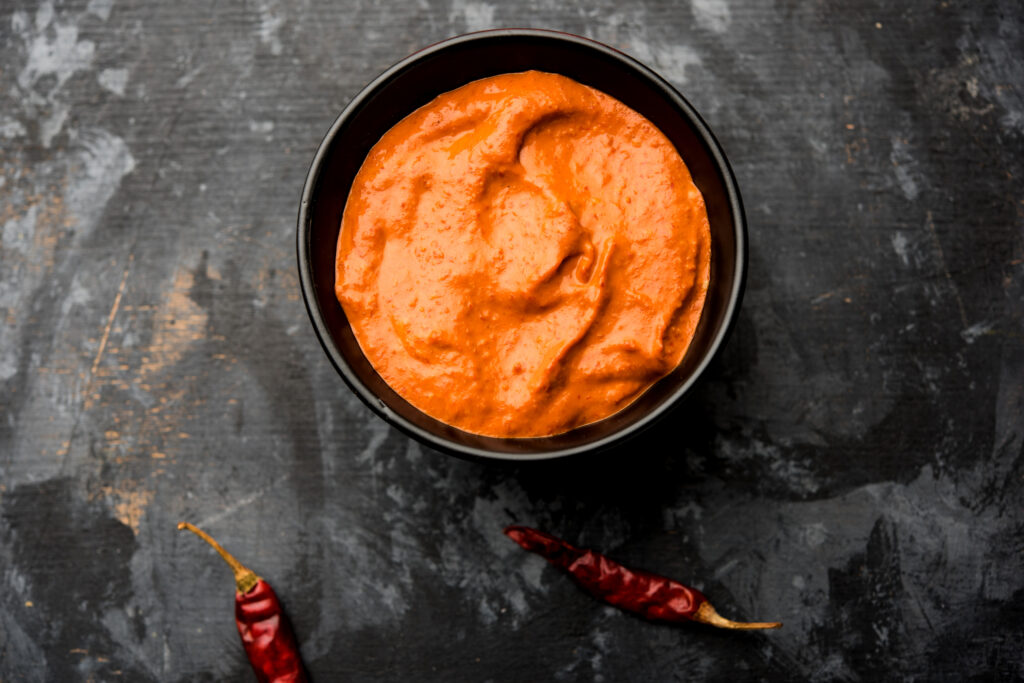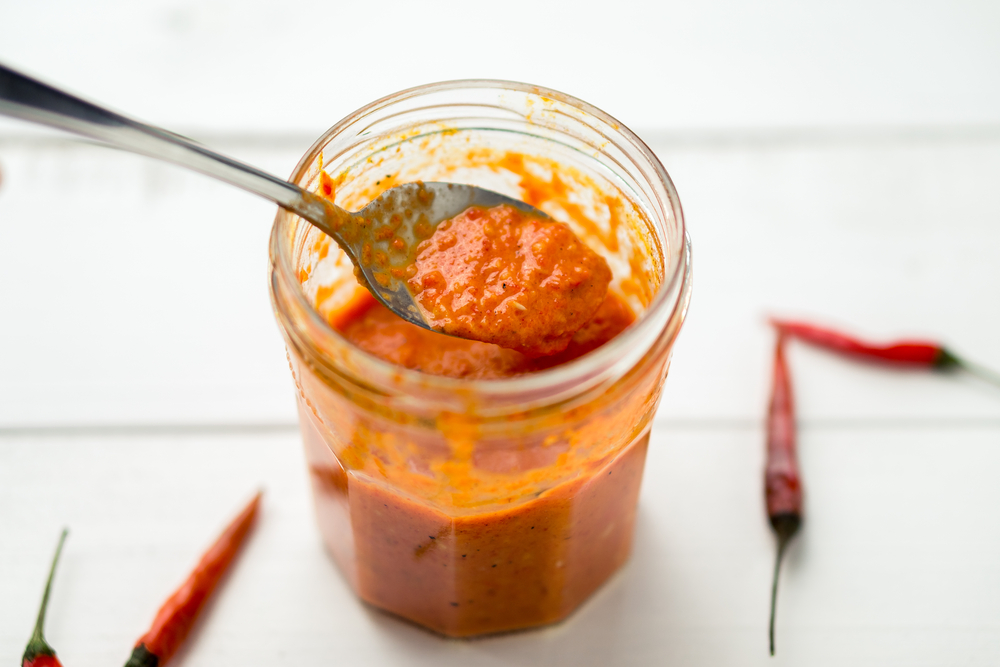Exploring the Heat: Peri-Peri Uncovered
Peri-Peri Chili: Origin and Flavor Profile
Embraced in South African and Portuguese gastronomy, the peri-peri chili, also known as African bird’s eye chili, offers an unparalleled balance of heat and flavor. It originates from the wild regions of Mozambique and South Africa, where the Portuguese settlers centuries ago first encountered its piquant zest. This small, tapered red or green pepper, typically measuring up to an inch in size, punches well above its weight in terms of spiciness, which can reach up to 175,000 Scoville Heat Units. Not only potent, but the peri-peri chili also has a distinctive citrus-like taste with a subtle earthy undertone, which has elevated it to a cornerstone ingredient in myriad spicy dishes across Southern Africa.
The Cultural Significance of Peri-Peri in South African and Portuguese Cuisine
The cultural journey of peri-peri is as fiery as its taste. It has been seamlessly woven into the fabric of South African and Portuguese culinary practices since its discovery by the Portuguese navigators. In South Africa, particularly among communities such as the Swazis, Tsongas, Mozambicans, and Angolans, peri-peri is much more than a seasoning – it’s a part of the heritage, infused in communal feasts and daily meals. In Portuguese cuisine, peri-peri is synonymous with traditional dishes such as Frango Piri-Piri, a symbol of Portugal’s exploration and culinary fusion, sharing the warmth of Southern African flavor with the world.
Peri-Peri in Culinary Traditions
Traditional Dishes Featuring the Peri-Peri Chili
Traditional dishes that honor the peri-peri chili are rich in history and taste. In South Africa, peri-peri is quintessential in ubiquitous dishes such as peri-peri prawns and the legendary peri-peri chicken, that latter being a global favorite. The versatility of this chili is also showcased in peri-peri basting sauces, marinades, and even stews. With its deeply ingrained culinary connection to peri-peri, Mozambique has developed a repertoire of dishes where this chili is the star. Whether grilling, sautéing, or simmering, cooks in this region celebrate peri-peri with a bold hand.

Peri-Peri Sauce and Its Versatile Culinary Applications
The fiery pulse of peri-peri cuisine is most famously encapsulated in its versatile and vibrant peri-peri sauce. This sauce typically blends peri-peri chilis with ingredients such as garlic, herbs, lemon, oil, and various other spices to create a taste that tingles the palate and excites the senses. Spanning beyond the realm of condiments, peri-peri sauce can serve as a piquant marinade for meats, a spicy kick to stir fries, or a robust dip that accompanies everything from chips to vegetables. Its culinary applications are endless, making it a pantry essential for those who adore a touch of heat.
Mastering Peri-Peri in the Kitchen
Making Your Own Peri-Peri Sauce
Creating your peri-peri sauce provides an adventurous foray into the world of homemade condiments. The secret lies in balancing the flavorful peri-peri chilis with a mixture of complementary ingredients. A basic recipe involves toasting the chilis, blending them with garlic, oil, lemon juice, salt, and a bouquet of selected herbs to reach that perfect harmony of spice and tang. Some recipes suggest adding a sweet element, like a dash of sugar or roasted bell peppers, to tame the heat. Once made, the sauce can be refrigerated and enjoyed over a few weeks, elevating any meal with its signature zest.
Tips for Cooking with Peri-Peri
When cooking with peri-peri, it’s essential to respect its strength; starting with a smaller amount and adjusting to taste is advisable. Pairing peri-peri with acidic components like lemon juice or vinegar helps to balance the intensity while infusing a refreshing zing. Another tip is to complement the chili’s natural flavor with aromatic herbs such as oregano, basil, and cilantro. When using peri-peri in marinades, allowing the dish to marinate for longer periods can yield a deeper infusion of flavors. It’s also important to consider the oil content, as oils help distribute the heat evenly throughout the dish.

Peri-Peri Beyond Borders: A Global Sensation
The International Popularity of Peri-Peri
The intense flavor profile of peri-peri has not only captivated the palates of South Africans and Portuguese but has also become an international sensation. Peri-peri themed restaurants have flared up globally, with chains and local eateries offering a variety of peri-peri-inspired dishes. Moreover, the shelf-stable peri-peri sauces found in supermarkets have made it easier for global home cooks to incorporate this African heat into their cooking. Its versatility and distinctive taste have secured peri-peri’s place as a beloved international spice with a rapidly growing fan base.
Fusion Recipes Incorporating Peri-Peri Flavors
Peri-peri has transcended traditional cuisine, finding its way into innovative fusion recipes. Creative chefs around the world are introducing peri-peri into everything from gourmet pizzas and upscale burgers to exotic cocktails and even sweet-savory desserts. Fusion dishes such as peri-peri infused taco fillings, spicy pasta sauces, and peri-peri seafood paellas are emerging, blending the chili’s African roots with global culinary techniques and flavors. The spice’s adaptability ensures it can surprise and delight in a multitude of unexpected ways.
Savoring the Spice of South Africa
Authentic South African Recipes Using Peri-Peri
Authentic South African recipes that incorporate peri-peri provide a genuine taste of the region’s cuisine. The iconic South African peri-peri chicken, barbecued or oven-roasted, is a must-try, delivering a succulent and spicy experience. Other authentic dishes include peri-peri kebabs and the indulgent peri-peri livers, served across the country from upscale restaurants to street-side vendors. For those seeking to savor these flavors, trying authentic recipes or seeking out South African eateries can make for a palatable journey into peri-peri’s fiery embrace.
Modern Takes on Peri-Peri Infused Dishes
Modern cuisine has welcomed the incorporation of peri-peri with open arms, experimenting with contemporary takes on classic dishes. Innovative concoctions include peri-peri infused risottos, vibrant grain bowls topped with peri-peri spiced proteins, and gourmet sandwiches that leverage the chili’s zest. Adventurous dessert menus are now even featuring peri-peri chocolate, which pairs the chili’s spicy undertones with the richness of cocoa. This modern exploration into peri-peri applications exemplifies the chili’s versatility and enduring appeal in today’s dynamic food landscape.
Peri-Peri in South African Cuisine: FAQs
What is peri-peri and what does it taste like?
Peri-peri, or African bird’s eye chili, is a chili pepper originating from Africa and is particularly prevalent in South African and Portuguese cuisine. It has a distinctive, tangy, and fiery flavor, with a hint of citrus and herbaceous overtones. The heat it imparts is intense but not overwhelming, with a warming effect that lingers on the palate.
Is peri-peri the same as piri-piri?
Yes, peri-peri is often also referred to as piri-piri. The different spellings come from various pronunciations in African and Portuguese languages, but they refer to the same chili and style of sauce or marinade. The name ‘peri-peri’ also colloquially translates to ‘pepper-pepper’ in Swahili, emphasizing its spicy nature.
How hot is peri-peri compared to other chilies?
Peri-peri ranks high on the Scoville scale, which measures the spiciness of chili peppers. It can range from 50,000 to 175,000 Scoville Heat Units (SHU), placing it significantly hotter than Jalapeños and similar in heat to habanero peppers. However, its exact heat can vary depending on the specific chili and preparation.
Can peri-peri flavor be toned down for less heat?
Absolutely. To enjoy the distinctive flavor of peri-peri without all the heat, you can incorporate it into dishes along with creamier elements such as yogurt, coconut milk, or dairy cream, which help to mitigate the spice level. Another method is to use a smaller amount of peri-peri relative to other ingredients, diluting its intensity but still enjoying its unique taste.
What foods pair well with peri-peri?
Peri-peri pairs beautifully with a wide range of foods. It is particularly delightful with chicken, seafood – notably prawns and fish – and lends a spicy kick to roasted vegetables. It also complements grains like rice or couscous and can transform dips and spreads. For a refreshing counterbalance, pair it with citrusy or sweet ingredients.
How should I store homemade peri-peri sauce?
Homemade peri-peri sauce should be stored in a sealed container in the refrigerator. Its high acidity and oil content typically grant it a decent shelf life. For long-term preservation, ensure it’s kept away from direct light and heat, and consider adding a layer of oil on top to reduce exposure to air. It may last for several weeks or even months if properly stored.
Where can I buy peri-peri chili or peri-peri sauce?
Peri-peri chilis and sauce can be purchased at specialty food stores, international markets, and increasingly at large grocery chains due to its growing popularity. Additionally, a variety of peri-peri sauce options are available online, ranging from mild to extra hot, allowing for global accessibility to this South African treasure.
